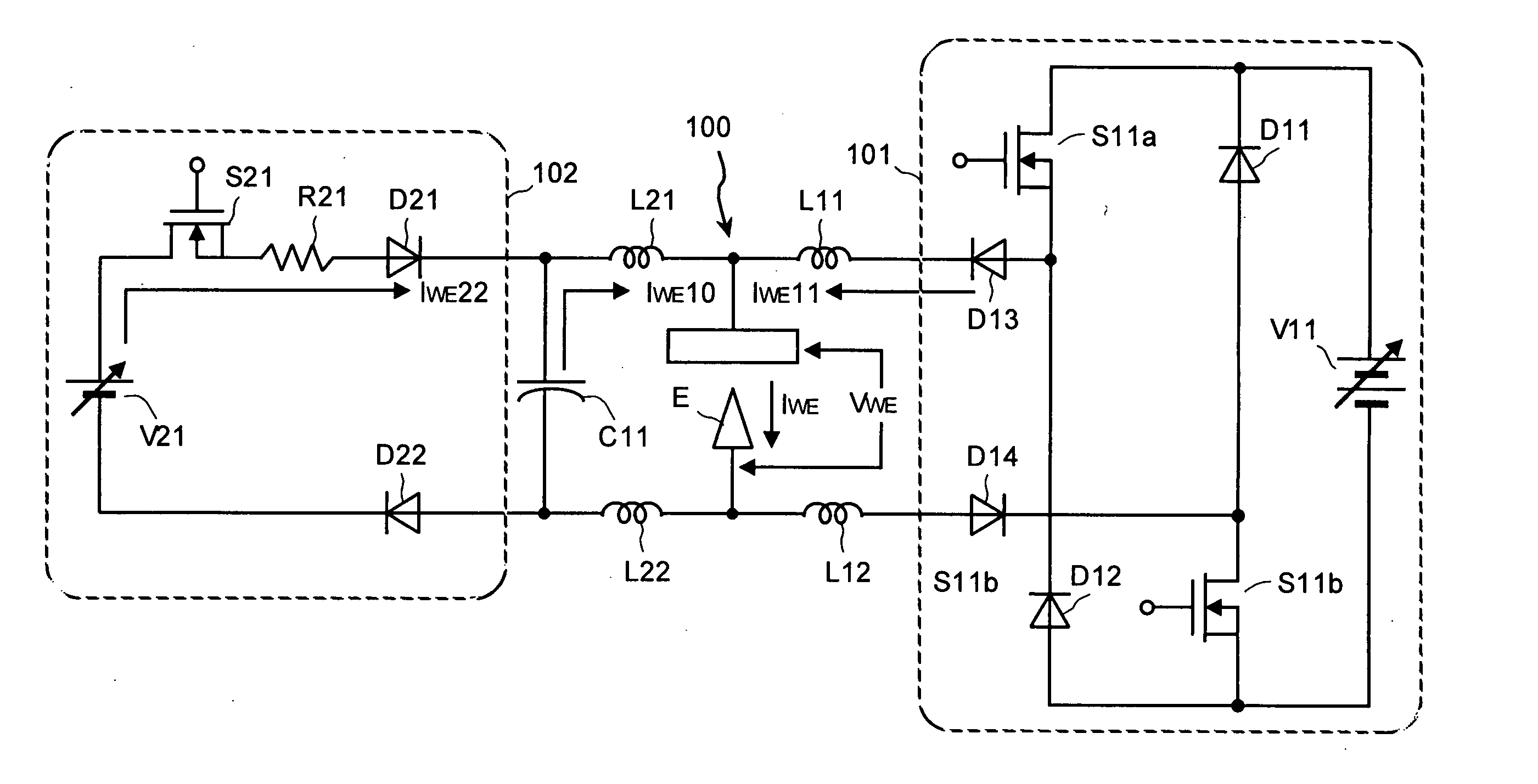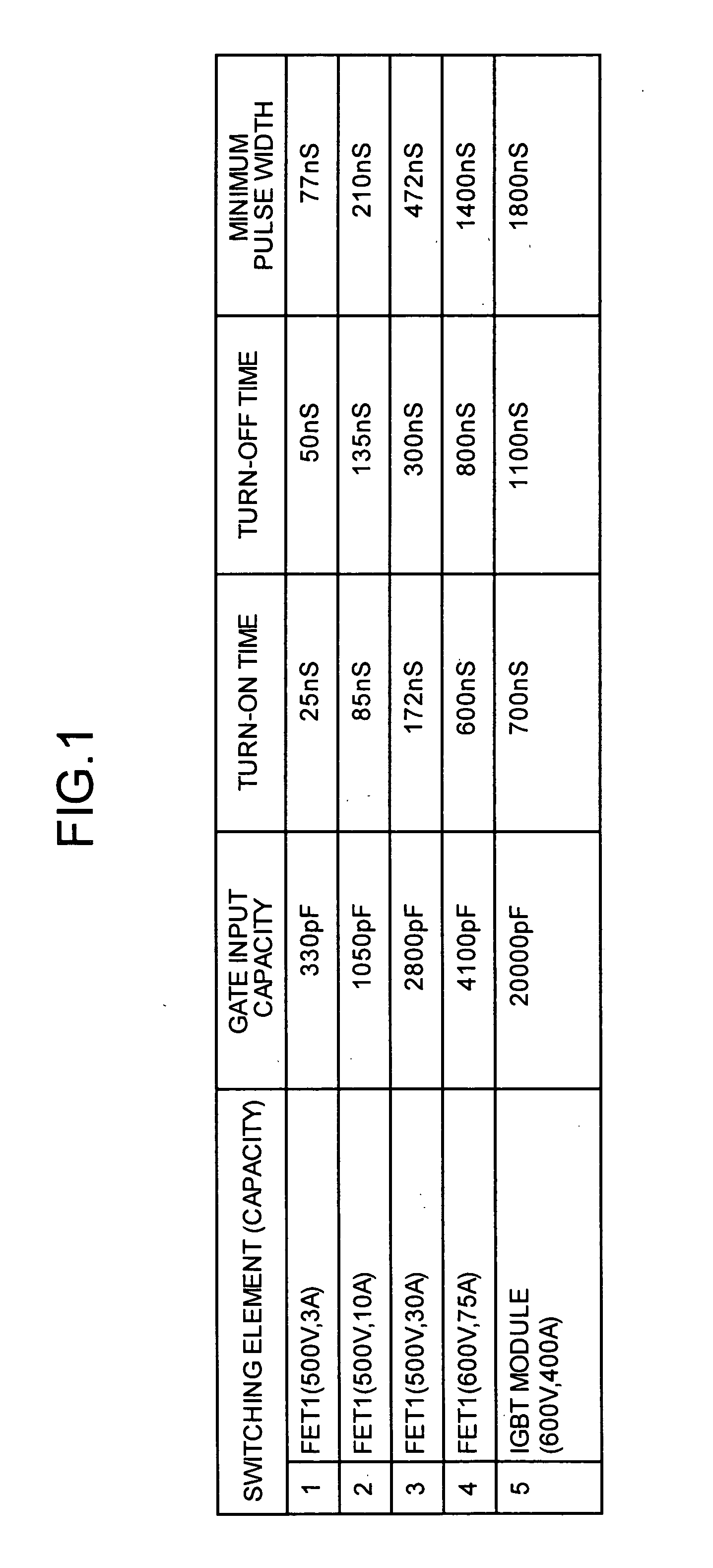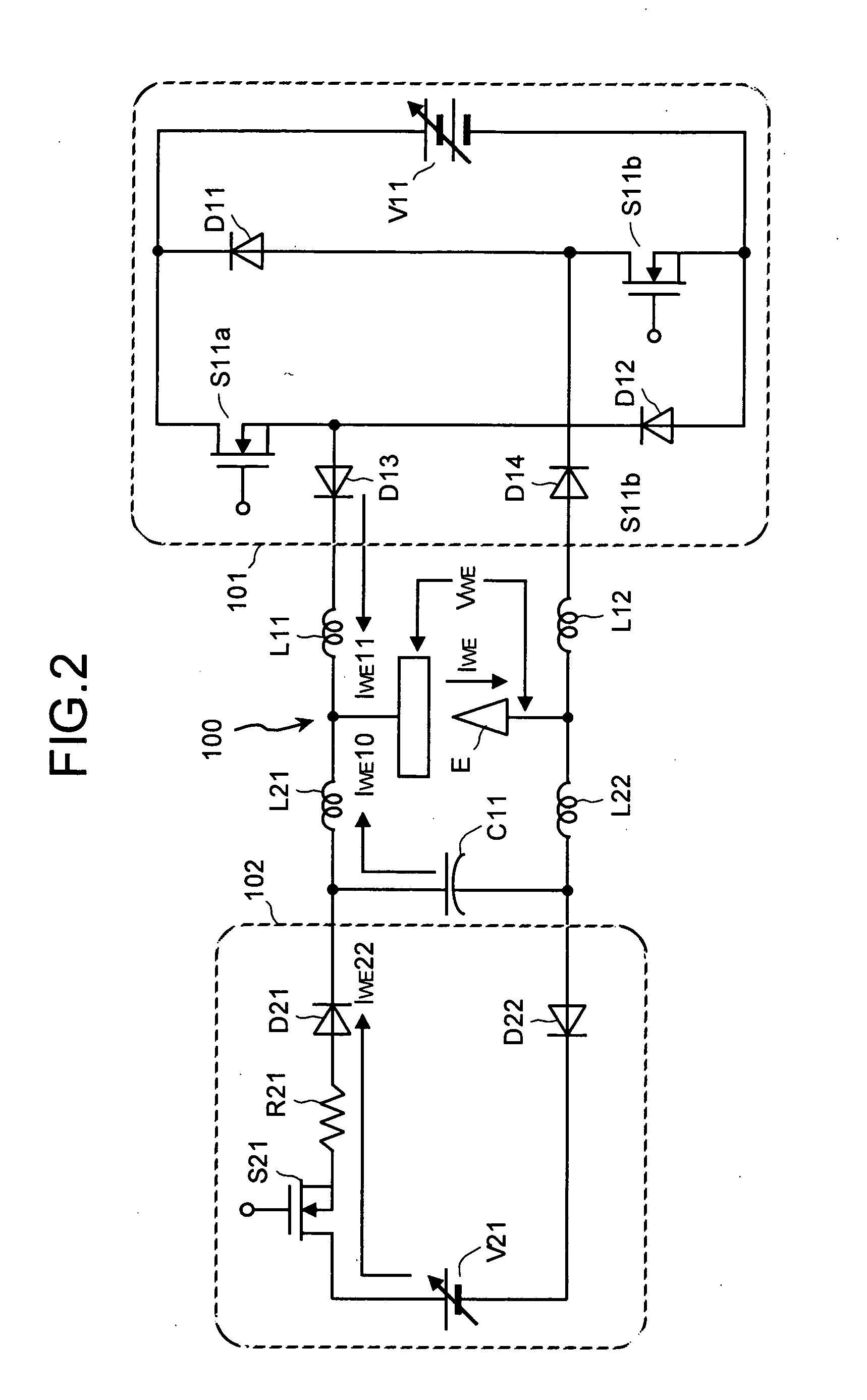Discharge-processing power source device
a power source device and discharge processing technology, applied in the direction of electric variable regulation, instruments, manufacturing tools, etc., can solve the problems of high cost of cooling of elements, inability to perform high-speed operations of switching elements, and large space occupation of elements in circuits, so as to reduce the number of elements and increase the current
- Summary
- Abstract
- Description
- Claims
- Application Information
AI Technical Summary
Benefits of technology
Problems solved by technology
Method used
Image
Examples
first embodiment
[0100]FIG. 5 is a circuit diagram of a main structure of a power supply device for electric discharge machining that is a first embodiment of the present invention. FIG. 6 is a block diagram of a structure of a power supply circuit that controls to drive switching elements of the power supply device for electric discharge machining shown in FIG. 5.
[0101] In FIG. 5, an electrode E and a workpiece W are arranged at an appropriate interval in an electric discharge machining unit. A DC voltage (inter-electrode voltage) can be applied between the electrode E and the workpiece W from the outside at the time when discharge is started. Note that a stray capacitance C1 is present between the electrode E and the workpiece W.
[0102] A variable DC power supply V1, switching elements Sa1, S1b, S2a, and S2b, and diodes D1 and D2 are arranged with respect to the electrode E and the workpiece W. Here, an element suitable for a large current and a low-loss (e.g., IGBT) is used for the switching ele...
second embodiment
[0135]FIG. 10 is a block diagram of a structure of a power supply control circuit included in a power supply device for electric discharge machining that is a second embodiment of the present invention. Note that, in FIG. 10, components identical with or equivalent to the components described in the first embodiment (FIG. 6) are denoted by the identical reference numerals and signs. Here, parts related to the second embodiment will be mainly explained.
[0136] In short, the power supply control circuit according to the second embodiment is a circuit that controls to drive the switching elements S1a, S1b, S2a, and S2b in the power supply device for electric discharge machining described in the first embodiment (FIG. 1). In the second embodiment, as a relation of characteristics between the switching elements S1a and S1b and the switching elements S2a and S2b, a speed difference may be large as in the first embodiment. However, the second embodiment can be applied even when the speed d...
third embodiment
[0160]FIG. 13 is a block diagram of a structure of a power supply control circuit included in a power supply device for electric discharge machining that is a third embodiment of the present invention. Note that, in FIG. 10, components identical with or equivalent to the components described in the second embodiment (FIG. 10) are denoted by the identical reference numerals and signs. Here, parts related to the third embodiment will be mainly explained.
[0161] In short, the power supply control circuit according to the third embodiment is a circuit that controls to drive the switching elements S1a, S1b, S2a, and S2b in the power supply device for electric discharge machining described in the first embodiment (FIG. 1). As shown in FIG. 13, drive circuits 7a and 7b, a numerical control device 8, and a switching device 9 are added as components in addition to the components described in the second embodiment (FIG. 10).
[0162] An input signal of the drive circuits 7a and 7b is the start ...
PUM
| Property | Measurement | Unit |
|---|---|---|
| Width | aaaaa | aaaaa |
Abstract
Description
Claims
Application Information
 Login to View More
Login to View More - R&D
- Intellectual Property
- Life Sciences
- Materials
- Tech Scout
- Unparalleled Data Quality
- Higher Quality Content
- 60% Fewer Hallucinations
Browse by: Latest US Patents, China's latest patents, Technical Efficacy Thesaurus, Application Domain, Technology Topic, Popular Technical Reports.
© 2025 PatSnap. All rights reserved.Legal|Privacy policy|Modern Slavery Act Transparency Statement|Sitemap|About US| Contact US: help@patsnap.com



